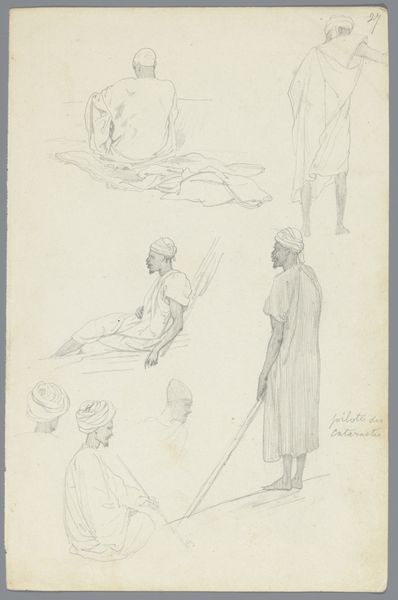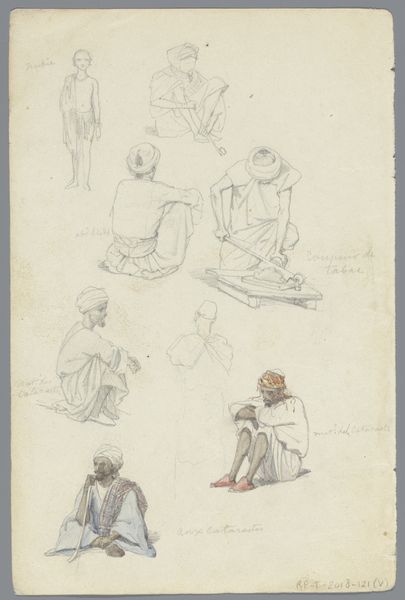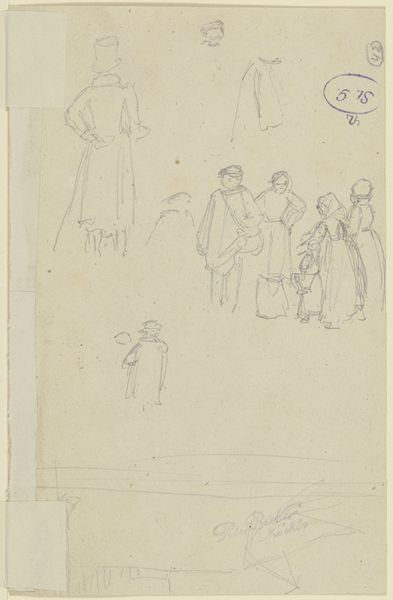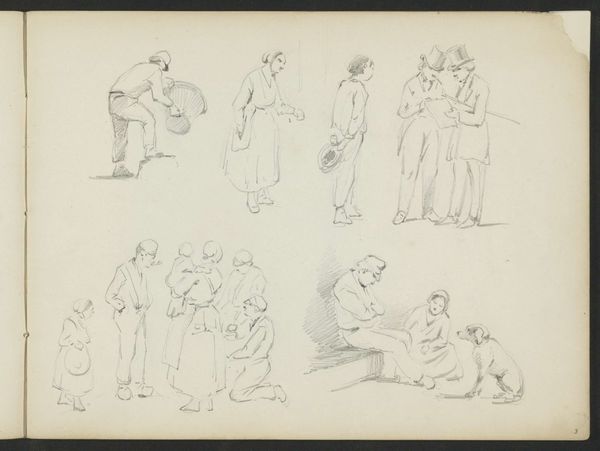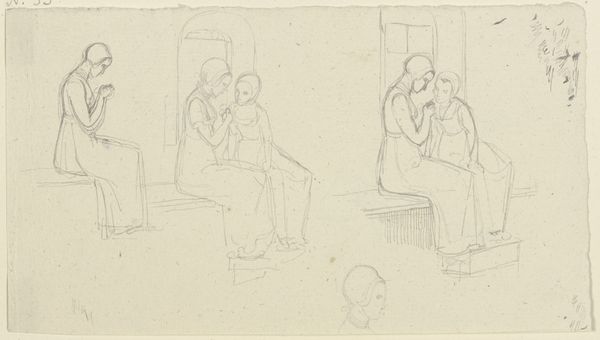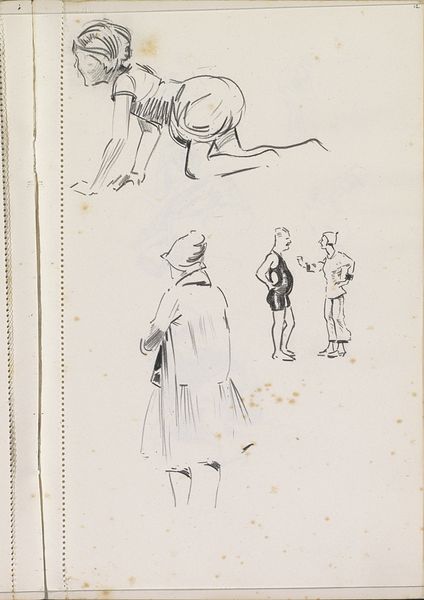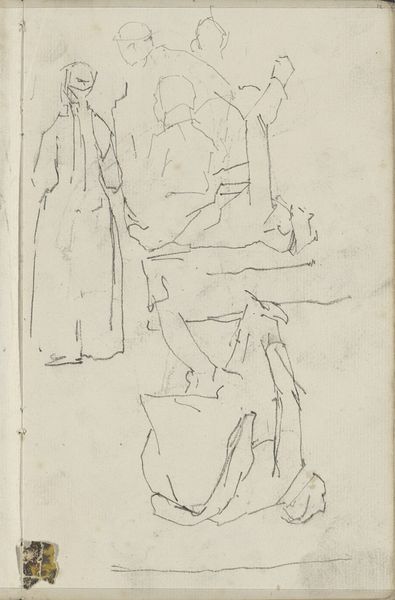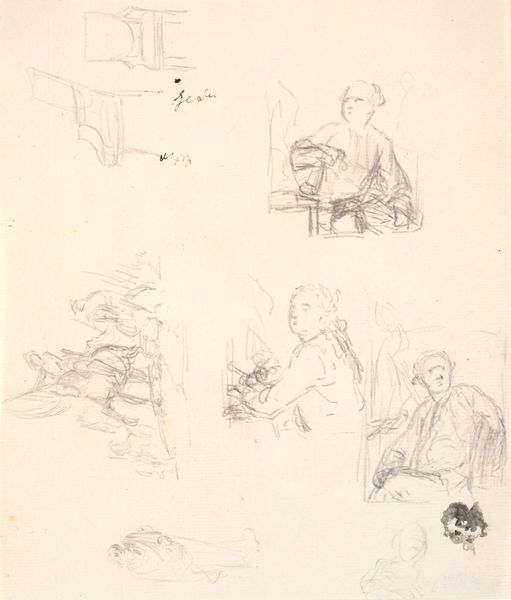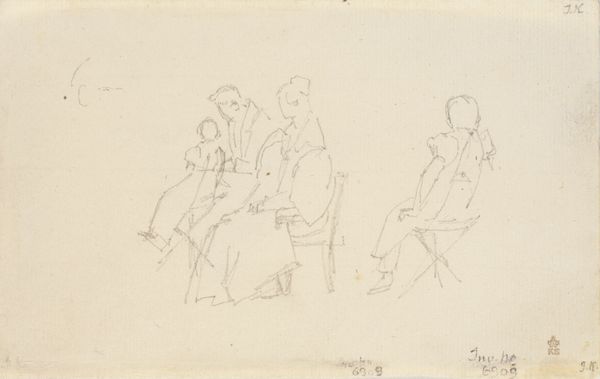
drawing, pencil
#
drawing
#
toned paper
#
light pencil work
#
quirky sketch
#
sketch book
#
personal sketchbook
#
sketchwork
#
ink drawing experimentation
#
sketch
#
pencil
#
orientalism
#
sketchbook drawing
#
genre-painting
#
storyboard and sketchbook work
#
sketchbook art
Dimensions: height 191 mm, width 125 mm
Copyright: Rijks Museum: Open Domain
Editor: Here we have Willem de Famars Testas' "Vijf mansfiguren in Oosterse kleding en een ezel," a pencil drawing from around 1858. It reminds me of snapshots from a journey, quick studies of people observed. What catches your eye in this sketch? Curator: The interplay of light and shadow, achieved through the varying pressure of the pencil, is most compelling. Consider how the artist utilizes line weight to define the figures' drapery and facial features. Note the strategic use of blank space, or negative space, which directs the eye and provides visual breathing room amidst the detailed renderings. Editor: I see what you mean, the negative space makes it feel less cluttered even though there are several figures. But, is the lack of shading elsewhere a lack of detail or a conscious decision? Curator: The conscious manipulation of tonal values, not their absolute presence, constitutes artistic expression here. Examine how the areas of deepest shadow articulate form, particularly in the folds of fabric and the contours of the figures’ faces. These subtle gradations contribute to the illusion of three-dimensionality within the two-dimensional plane. Editor: So, it’s more about what *is* there than what is *not* there? I never really considered it like that. Curator: Precisely. We should note that the composition is not random but rather carefully arranged on the toned paper support to direct the viewer's attention and orchestrate the visual rhythm. Observe how the figures’ gestures and poses complement one another, forming a cohesive visual narrative within the sketch. Editor: This piece makes me rethink what is valuable in sketches. Thank you for pointing out how the interplay of elements really make this drawing more compelling than it looks at first glance. Curator: My pleasure. It’s through this close visual analysis that we uncover the artist’s intent and appreciate the inherent beauty of form and composition.
Comments
No comments
Be the first to comment and join the conversation on the ultimate creative platform.
